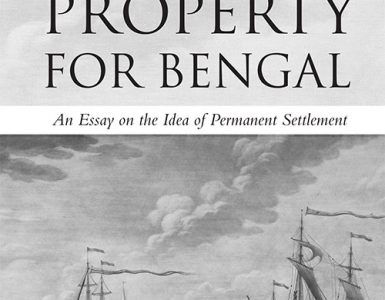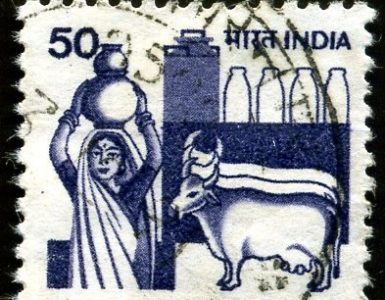Fatima Rajina
The Trojan Horse Affair podcast, produced by Serial Productions, has reignited a conversation on the long-standing effects of the hoax and its impact on the Muslim community in east Birmingham as well as the wider British Muslim community. The podcast did many things: for some, it re-opened old wounds, while, for others, it provided clarity and a form of vindication; a vindication that has been long denied as a result of the War on Terror and its associated rhetoric and logic where Muslims either had to be with ‘them’ (the alleged organisers of the Islamist plot), or stand firmly against them.
For me, it laid bare the truth of what happened, how it happened and how a whole narrative had been intentionally constructed to vilify the Muslim community. I was doing my fieldwork for my PhD in Tower Hamlets at the time where the very same journalists who reported on Birmingham were attempting to concoct a similar narrative about the schools in this London borough. In this regard, Syed and Reed’s revelations about the Trojan Hoax embodied the state’s roused hunger to relentlessly hunt Muslims and punish them punitively wherever they may be a significant majority and have access to some local power.
The podcast succinctly articulated the inner machinations at play during the Trojan Horse affair, which many Muslims were already aware of, even if this was denied by key players. Its thorough and critical investigation is what provided some solace, a form of reckoning. However, Serial’s legitimate questions around the affair were met with silence from the media class and the political class. The lack of engagement from the government with the facts and questions raised in the podcast was duly noted, particularly from individuals like Michael Gove, who during the Trojan Hoax was the Education Minister.
Although I could write and dissect much more about the podcast and its reception, I would like to think about a documentary cited in the podcast. In the first episode, Tahir Alam, former chair of governors at Park View Academy, and Moz Hussain, the first Muslim teacher to be employed at the school, mention the BBC Panorama documentary provocatively titled Underclass in Purdah broadcast in 1993. Tahir Alam explains how this documentary captured his attention, mainly focusing on the academic underachievement of Pakistanis and Bangladeshis in Bradford and Birmingham with a specific focus on the Pakistani community. One of the two schools featured was Park View, the school that Tahir Alam had himself attended.
Tahir Alam has this to say to Hamza Syed, one of the presenters of the podcast, about the documentary and how it made him feel:
“Archived recording: But for Pakistanis and Bangladeshis, an astonishing 50% hold no qualifications whatsoever.
Hamza Syed: 50%, half of us, were basically failing school. That hit Tahir hard.
Tahir Alam: That the extent of education failure was so bad that we were at risk of creating an underclass of Muslims, who were, basically, uneducated, prone to crime and unemployment.
So I kind of sat there, and it made me feel guilty, actually, guilt because I was one of the few people who made it from my family, one of the first ones to make it to university and to have a good job and so on.
But there was also a sense of humiliation, really, because I was from this community.”
(The Trojan Horse Affair Podcast, Serial Productions, 2022: episode 1)
It was this that stirred him to push for educational reform in Alum Rock, his east Birmingham neighbourhood, home to a large Pakistani community. As a result, he became an avid advocate for raising the educational aspirations of young Muslims in Alum Rock and giving them access to opportunities that were hitherto unavailable to them.
The Asian or Muslim Asian?
The most striking element about Underclass in Purdah is the title itself. But, before I come back to it, I will provide a brief overview of the documentary and its alleged insights. The documentary claims to widely explore the economic and educational experiences of Pakistanis and Bangladeshis in Bradford and Birmingham though much of the focus is on the Pakistani community across the two cities, with a few minutes given to explaining differences with the Bangladeshi communities. Nonetheless, the documentary feebly characterises the two communities’ supposed failures and juxtaposes them against the wider Indian and East African Asian communities.
The presenter of the show, Nisha Pillai, a South Asian of Indian descent, bizarrely introduces the documentary with the following line:
“The stereotype “Asian” is the hardworking businessman or doctor doing well for himself [sic] but for the majority of Muslim Asians, that stereotype is a myth. A new generation of Pakistanis and Bangladeshis, potentially the biggest ethnic group in the country, is growing up angry and alienated from white society. In tonight’s programme, we lift the veil on this new underclass.”
‘South Asian’, it should be pointed out, is a category that signifies very little. However, even when it is flattened despite its multitude of languages, cultures, customs, clothing, religion and much more, the term evokes a set of imageries and narratives of ‘a people’ to the average person. Indeed, this signifier is as dynamic as any other, but the deeply ingrained habits of perception are why such collapsing is made possible. Having noted that, though, where we notice a shift and a deviation from the term, especially in this documentary, is the continuous use of ‘Muslim Asians’. This category alludes to the material and political circumstances of Bangladeshis and Pakistanis.
The repurposing of ‘Asian’ taps into a different set of established fears, particularly around the Muslim. It facilitates, heightens and inflates the importance of how ‘these Muslims are a menace’. At the same time, those who are non-Muslim who hail from the same geographical region are placed in a unique position: to uphold the boundaries of what makes a good ‘other’ citizen. This became ever more defined following the Northern mill town uprisings in the summer of 2001 where ‘…Hindu and Sikh activists had published warnings against the dangers of Islam’ (Bagguley and Hussain 2008: 55) and that those participating were all Muslim Asian boys and men (read: not our boys!). Kundnani elaborates on how such mixed-class snobbery from non-Muslim Asians, especially The World Council of Hindus, came out to publicly ‘disown the Muslim rioters, hoping to make clear to whites that Hindus should not be tarnished with the same brush. Asian solidarity had died’.
It is important to note that although these events happened in 2001, a similar tone is utilised to demarcate the apparent splintering along religious lines in Underclass in Purdah. The example used in the 1993 documentary was the Salman Rushdie Affair and the burning of effigies by some Muslims. Again, the emphasis here was that the Asian Muslims are the trouble-makers while the non-Muslim Asian, rather insipidly, ought to be rewarded and not be infringed upon with the diatribe of Muslim Asians. The Muslim Asian becomes the pariah, expunged into a permanent pathologised frame, corresponding with the tropes and fear-mongering employed by the Trojan Hoax.
Underclass in Purdah – a pathologisation
It is essential to consider the language deployed to discuss Muslims, and here the title of the documentary warrants some attention. Purdah, in its most basic definition, means curtain in Farsi. Within the social context, it refers to the socio-religious and cultural practice of South Asian women, primarily Hindu and Muslim women, secluding themselves through their sartorial choices in ensuring their skin is covered and concealed, including their body form. The practice of purdah also extends to the physical segregation of men and women. Importantly, purdah is also a term used within the UK political landscape before any election to emphasise the specific restrictions while canvassing.
Mobeen Hussain, who focuses on colourism and practices of skin-lightening and examined how bodies were racialised in colonial South Asia, however, argues that the historical practice of purdah went ‘far from fitting into binary narratives of veiling/unveiling and traditional and primitive versus modern and progressive’ but that they were ‘often about navigations of space, familial hierarchies, and changing public roles’ (Hussain 2021: 163). Its use in the documentary title implies that this underclass, Bangladeshis and Pakistanis, are in hiding. They are yet to appear in society. The ominous accompanying music also adds to this tension of why these communities are ‘unwilling’ to get themselves out of poverty and why they continue adhering to their ‘strange’ customs, locating the responsibility on those impacted by the structural violence.
The primary problem with the way the two communities are (re)presented is that they are projected as inherently lacking the desire to want change and achieve good grades or give their children a good life. Yet we witnessed how Alam transformed the schools by paying attention to the particular needs of young Muslims in schools in east Birmingham and raising their aspirations, as previously this was non-existent:
‘The racism was pervasive. Razwan Faraz, a former governor and math teacher, says at one of his first governing body meetings, he was shown a list of places the students had been given work placements through a program at the school. And it was all restaurants, supermarkets, clothing stores.’
The Trojan Horse Affair Podcast, Serial Productions, 2022: episode 1
In the documentary, though, there is no treatment of structural factors with much of the focus on the families alone and their choices. There is also little recognition of meeting the needs of the young Muslims, articulating the claim that they are making it difficult to ‘escape the ghetto’. The families are captured through a monolithic pattern, thereby pathologising them. For example, in the scenes with Muslim women, they are presented as passive individuals who are not invested in their children’s future but are bound by their customs and adhering to their men’s commands.
McLoughlin affirms this by noting how the documentary’s structure alludes ‘to an essentialist set of assumptions about Muslim Asian women as necessarily the confined bearers of traditional izzat (family honour) and sharm (shame) in contradistinction to the goals of a democratic and secular society.’ (McLoughlin 1998: 91). This perfectly illustrates the limits of thinking about the Muslim Asian woman, of continuously relying on prescribed, orientalist-induced workings. These racist fantasies are on repeat within the cultural and political terrain and determined how the political and media class discussed the Trojan Hoax. In the podcast, we hear references made by Sue Packer in episode 5 about her concerns about young Muslim women, including her colleagues, and that they were culturally and religiously trapped, and she wanted to facilitate a way out for them.
As ever, when there are stories specifically about racially minoritised communities, there will always be those from within those communities who present themselves as the alternative. Those who have proven capable of proper, unweird human behaviour (read: leveraging a proximity to whiteness) and substituting the usual patterns of consumption to ‘help’ those left behind. Such individuals project a vilification of the Muslim Asian that is a different form of violence to reassert their sense of awakening, of holding a superior position. The Panorama documentary deliberately seems to avoid discussing, and I would argue is a glaring omission, how there is little discussion around the de-industrialisation of the cities these Asian Muslims are in. The lack of economic opportunities is a critical factor because we see this raised in multiple scenes, including the one where a burglar is interviewed who discusses the lack of opportunities available that pushes many to turn to criminal activities.
The tenuous attempts to link the ‘anger and alienation’ felt by young Muslim Asian men to essentialist cultural behaviours are fraught. Addressing the current political and social imaginings during and following the Trojan Hoax, the Muslim Asian bears an arbitrary sense of justice. What I mean by this is how the sheer fear that reverberated within the political class, abetted by the media class, was all willing to sacrifice the Muslim to legitimate the ever-expansive surveillance apparatus. After all, the Muslim, especially the body of the Asian Muslim man, is ostensibly the site through which the national identity and image are asserted. Such exclusionary practices were a way for non-Muslim Asians to part ways with their peers.
Conclusion
Ultimately, the documentary provides a shallow analysis for several reasons: firstly, the diluting of the structural; secondly, the over-reliance on crude, essentialist framings of the Muslim borrowed from colonial vernacular in conjunction with using purdah nefariously, including the idea that the documentary aims to ‘lift the veil’ of these communities. The Asian Muslim’s positioning has changed very little since the release of Underclass in Purdah with a more intensified hyper-vigilance and focus on this subject. Its claims are deeply grounded in historical and contemporary (re)configurations of the Asian Muslim who requires regular intervention by the state. This imagining activates the need to brazenly unveil these communities to make them whole, to learn to embody civility and enter modernity. The inferring is that the Asian Muslim simply cannot, and will not, escape their ‘cultural trappings’.
The documentary ends with a quote by the Carlton Bolling College headteacher, Mervyn Flecknoe, that ‘our city centres will become as difficult as American city centres’. This analogy posits the idea that the violence is outsourced to these otherwise progressive cities by outsiders, the internally racialised ‘other’. These impenetrable anxieties around the Asian Muslim defy any pragmatism. The discourse has remained stagnant, and even with the podcast exposing the affair as a hoax again, the lethargic non-response remains, particularly in Birmingham. The lack of engagement or even acknowledgement of an error actually serves to heighten the dismembering of the Asian Muslim. The Asian Muslim is either hypervisible or remains invisible. The caricaturing of the Asian Muslim as an underclass, requiring a necessary intervention to make them unhidden, exposed means their mere existence haunts the imagination of the state. Whether hypervisible or invisible, the Muslim occupies the mind of the oppressor. In this regard, the disciplining of Muslims, through whatever means possible, will endure in the long run.
References:
Bagguley, P., & Hussain, Y. (2008). Riotous Citizens: Ethnic Conflict in Multicultural Britain (1st ed.). Routledge. https://doi.org/10.4324/9781315606477
Hussain, A. M. (2021). Race, Gender, and Beauty in Late Colonial India c.1900-1950. (Doctoral thesis). https://doi.org/10.17863/CAM.76222, p.163.
McLoughlin, S. (1998). ‘An underclass in Purdah?’ Discrepant representations of identity and the experiences of young-British-Asian-Muslim-women. Bulletin of the John Rylands Library, 80(3), pp.89-106. DOI: https://doi.org/10.7227/BJRL.80.3.6

Fatima Rajina is a Legacy in Action Research Fellow at the Stephen Lawrence Research Centre at De Montfort University. After completing her MA in Islamic Societies and Cultures at SOAS, she went on to do a PhD after successfully securing a Nohoudh Scholarship with the Centre of Islamic Studies, SOAS, University of London. Completing her PhD at SOAS, Fatima’s work looks at British Bangladeshi Muslims and their changing identifications and perceptions of dress and language. She has also worked as a Research Assistant at the Institute of Criminology, University of Cambridge looking at police and counter-terrorism. Fatima was also a Teaching Fellow at SOAS, Research Fellow at UCL IoE, and, additionally, she worked as a Lecturer in Sociology at Kingston University London.
Header Image Credit: Alum Rock Road, Birmingham, K. Khan
Bio Image Credit: Ellie Kurttz
TO CITE THIS ARTICLE:
Rajina, F. 2022. ‘Underclass in Purdah: Britain’s never-changing relationship with its Asian Muslims and the creation of the Asian Muslim’ Discover Society: New Series 2 (2): https://doi.org/10.51428/dsoc.2022.02.0004




